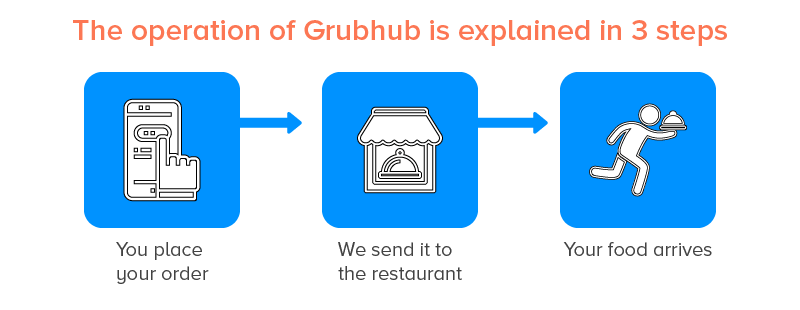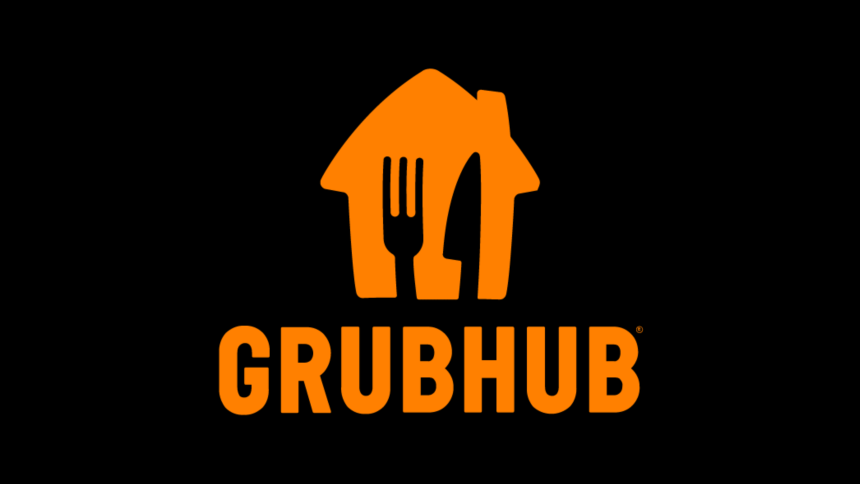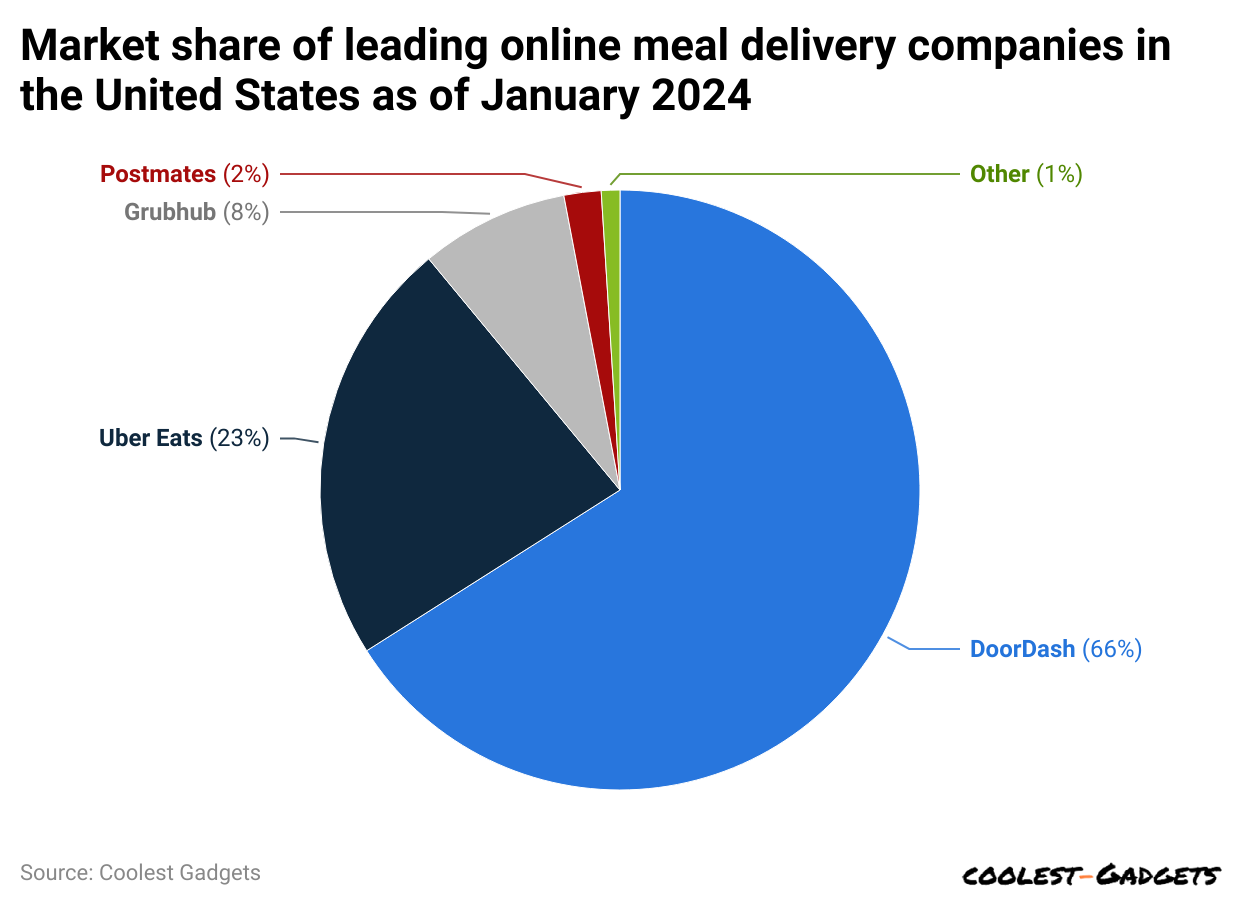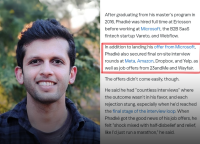What if a food delivery giant could dominate the industry while tackling relentless competition head-on? Grubhub is more than just a meal delivery service—it’s an innovation powerhouse reshaping how restaurants operate and connect with customers.
With a sharp focus on AI-driven solutions, advanced logistics, and strategic partnerships, Grubhub is pushing the boundaries of convenience and efficiency. As the food delivery landscape grows more competitive, the company continues to evolve, setting new standards for customer experience and restaurant operations.
From Disruption to Dominance: Grubhub’s Unstoppable Rise
Grubhub launched in 2004 when Matt Maloney and Mike Evans set out to simplify food ordering. What began as a small startup quickly revolutionized how millions get their meals, turning it into an industry leader. By leveraging technology and rapid expansion, it didn’t just grow,it set new benchmarks for speed, convenience, and customer experience.

Under CEO Howard Migdal, Grubhub continues to lead the food delivery space. With AI-driven logistics, strategic partnerships, and a relentless focus on efficiency, it refines every step of the process while keeping customer satisfaction at its core. Backed by strong leadership and constant innovation, Grubhub isn’t just adapting to a changing industry, it’s defining its future.
Technological Advancements: Redefining the Food Service Experience
Grubhub is rewriting the script of the food service industry, forging a path that goes far beyond mere delivery. Virtual kitchens, shared kitchen spaces where restaurants prepare food for delivery-only services, are the cornerstone of this transformation, offering restaurants the chance to soar without the weight of traditional physical locations.
With this innovation, businesses can scale rapidly, tap into new customer bases, and boost profits without the overhead that once stifled growth. What we’re witnessing is the birth of a new, tech-driven food service ecosystem, where efficiency, scalability, and customer satisfaction reign supreme.
But the evolution doesn’t stop with virtual kitchens. Grubhub’s embrace of AI-driven logistics is revolutionizing delivery by turning every order into a precise, lightning-fast operation. Real-time route optimization and predictive algorithms anticipate consumer needs before they even hit ‘order.’
It’s not just about delivering meals—it’s about delivering them faster, smarter, and with pinpoint accuracy.

Through these advancements, the platform doesn’t merely meet demand—it stays a step ahead, ensuring customers receive their meals at the peak of freshness, with seamless, uninterrupted service.
As this technological renaissance unfolds, Grubhub is also transforming how restaurants interact with customers. Through intelligent systems that streamline everything from order placement to delivery, the experience becomes smoother, faster, and more personalized. This seamless integration of tech is setting new standards for the industry, establishing a blueprint for future growth.
Grubhub’s relentless pursuit of innovation is shaping not just how we order food, but how restaurants and consumers connect in a world that demands speed, efficiency, and flawless execution.
Expanding Beyond Delivery: Grubhub’s Strategic Evolution
Grubhub is no longer just a food delivery platform—it’s a powerhouse that’s rewriting the rules of the restaurant world. By pioneering virtual kitchens, Grubhub is giving restaurants the keys to thrive without the burden of physical locations. The result? Unmatched scalability, broader reach, and profit-maximizing opportunities. This bold move is reshaping the entire food service ecosystem, empowering businesses to thrive in a digital-first era. But Grubhub isn’t stopping there.
Their cutting-edge restaurant tech solutions are revolutionizing operations, enhancing customer interactions, and streamlining ordering in ways that were once unimaginable. By teaming up with titans like Starbucks, Yelp, and Google, Grubhub’s grip on the market is tightening, ensuring customers enjoy a seamless journey from discovery to delivery.
With each strategic partnership and innovative leap, Grubhub isn’t just keeping pace with the future ; it’s creating it. As the company continues to integrate advanced technology with the food delivery experience, it’s setting new benchmarks for efficiency, convenience, and profitability. The digital transformation of food service is underway, and Grubhub is leading the charge, shaping a future where restaurants and consumers connect, engage, and thrive in ways never before possible. The revolution is here, and Grubhub is its architect.
Conquering the Competition: Dominating a Fierce Market Arena
In a cutthroat industry where the stakes are high, this delivery powerhouse isn’t just playing the game; it’s rewriting the rules. The food service sector is an arena where speed, service, and technological innovation collide, and this platform is leading the charge. With rivals on all sides, it’s not about keeping up: it’s about staying miles ahead.
By embracing groundbreaking technology, forming powerhouse partnerships, and continuously optimizing its operations, this company has solidified its position as the industry’s frontrunner. From lightning-fast deliveries to revolutionizing the dining experience, it’s not just surviving in the competitive battlefield; it’s setting the standard for success.
The race for dominance doesn’t stop at today’s triumphs, it’s about anticipating the future and shaping it. Staying ahead means constantly innovating and adapting to market shifts. Strategic collaborations with tech giants and a relentless drive to refine customer satisfaction ensure it remains untouchable. But in a market that evolves faster than anyone can keep up, complacency is the true enemy. While others chase the latest trends, this leader must continue to stay one step ahead, or risk being left behind.
Economic Analysis: Financial Trajectory and Market Position
The food delivery industry has been a major growth driver in recent years, and Grubhub has capitalized on this surge. In 2023, the platform reported $2.1 billion in revenue, up from $1.8 billion in 2022—an increase of 16.6%. This steady growth reflects the growing consumer preference for food delivery, especially after the pandemic.
However, despite this rise in revenue, the company continues to face significant profitability challenges. High logistics and marketing costs, compounded by its parent company Just Eat Takeaway’s $3.5 billion operating loss in 2023, have limited financial success. As the company scales, focusing on improving operational efficiency will be key to achieving long-term profitability.
In the face of fierce competition, this delivery platform maintains a strong market position, though it still lags behind industry leader DoorDash. As of 2024, this platform holds 8% of the U.S. food delivery market, while DoorDash controls 66%, according to Statista. Despite this gap, the company’s strategic partnerships such as those with Starbucks and Yelp have enabled it to maintain a loyal customer base. These collaborations enhance its value proposition by improving visibility and customer experience.
Coupled with innovations like AI-powered delivery logistics, the company is able to optimize speed and efficiency, maintaining competitiveness in a crowded market.
Bureaucracy vs. Innovation: Overcoming Regulatory Challenges
Grubhub’s journey has been a relentless pursuit of innovation, yet the regulatory environment has consistently presented obstacles. As the company reshapes the dining experience with AI-powered ordering systems and smart delivery tech, it must also navigate complex food safety laws, data privacy regulations, and other government restrictions.
While bureaucracy poses a challenge, Grubhub is determined to break through. By challenging outdated rules, forming strategic alliances with regulators, and leveraging automation to ease compliance, Grubhub has managed to sustain its innovation while staying on the right side of the law. However, these regulatory challenges remain a constant strain, one that the company must balance carefully to continue its forward momentum.
Grubhub’s Legacy: A Blueprint for Innovation
Grubhub didn’t just enter the food delivery market; it revolutionized it. By proving that on-demand dining could be fast, reliable, and intuitive, Grubhub sparked a wave of change. Competitors were forced to adapt, striving to match the innovation and ease Grubhub brought to the table.
Grubhub’s influence stretches far beyond delivery; it’s revolutionizing the very concept of convenience. By pioneering advancements in technology and logistics, Grubhub isn’t just meeting consumer needs; it’s setting bold new standards, reshaping the future of service and defining what seamless innovation truly looks like.
Yet, even with its transformative legacy, Grubhub’s future is far from secure. The company now faces its most significant challenge: scaling its innovation while tackling mounting competition, market saturation, and shifting consumer expectations.
Final Thoughts
Grubhub’s relentless drive has transformed the food delivery industry, setting new standards for convenience and service. But as the company reaches new heights, the challenge isn’t just innovation: it’s sustaining growth amid fierce competition and evolving consumer demands. The path forward requires more than visionary ideas; it calls for precision in execution.
If Grubhub can master this balance, it won’t just lead the industry, it will redefine it. The next chapter will determine whether Grubhub solidifies its legacy as an industry titan or succumbs to the very pressures it helped create.
The larger question is: how long can Grubhub continue to innovate at its current pace, all while managing the burden of compliance? In a constantly evolving regulatory landscape, the ability to adapt will determine whether Grubhub can remain the leader it aspires to be.










